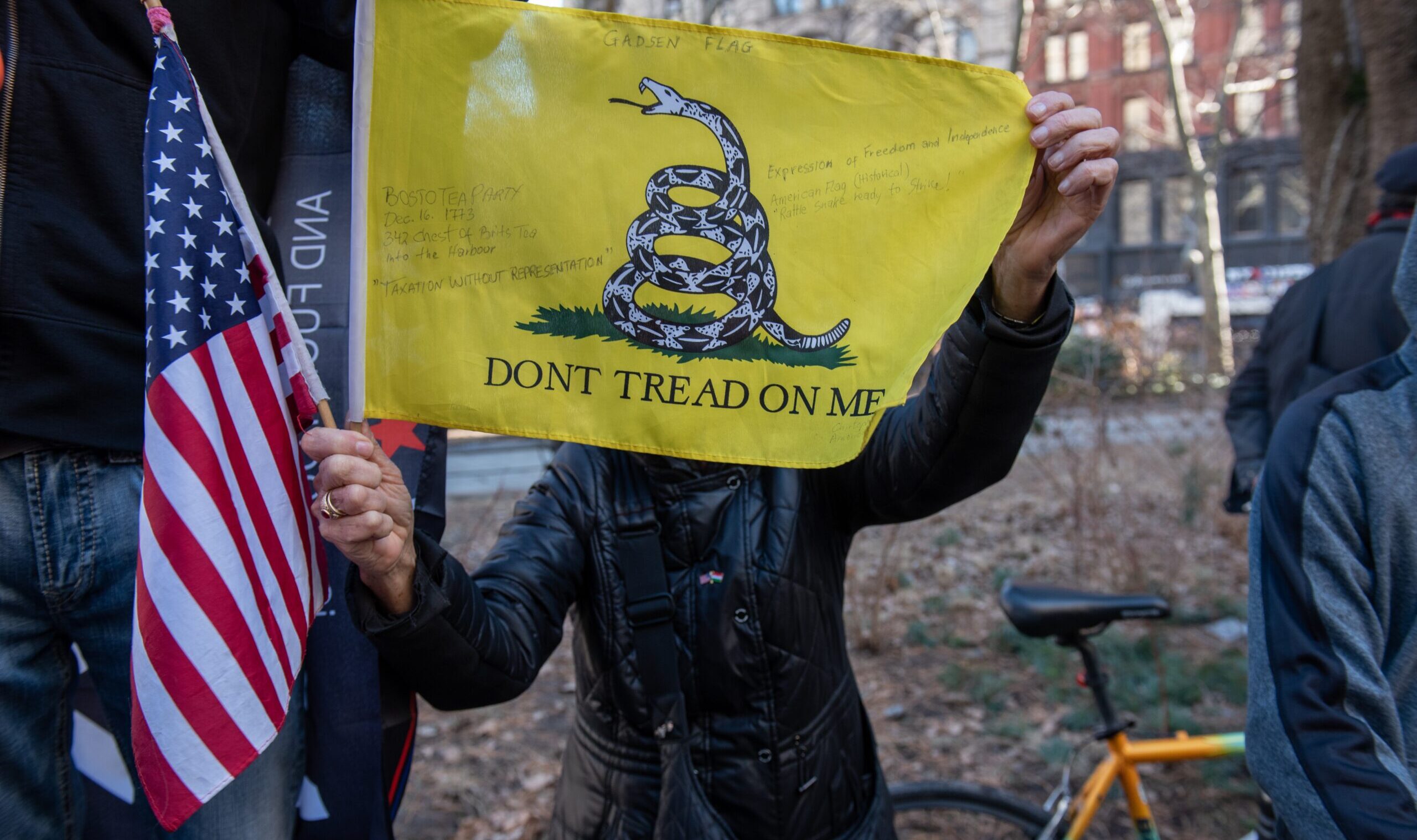The Alito Flag Furor Shows the Left’s Generational Change
It wasn’t so long ago that American leftists were enthusiastic about American historical symbols.

God help us, they found another flag.
The typing classes of these United States have for about a week been obsessing about affairs vexillological at the residences of the U.S. Supreme Court’s Associate Justice Samuel Alito. The first report: Following a dispute with neighbors, Mrs. Alito flew an upside-down American flag outside their Alexandria home. Hysteria ensued. Flying an American flag upside-down, as everyone knows, is a dangerous far-right behavior, a middle step on the steep stairwell down to really deviant political behaviors, like George Lincoln Rockwellism and wearing pastel shorts. (Never mind that the upside-down American flag is a staple of the far-left visual vocabulary, particularly the anti-war movement.)
Then the second flag hit. It was discovered by intrepid investigators at the New York Times that the Alitos were accustomed to fly the Pine Tree Flag outside their New Jersey beach residence, along with a Long Beach Island flag (who knew they had a flag?) and, pathetically, a Philadelphia Phillies flag. As everyone knows, the Pine Tree Flag, a Revolution-era banner that bears—you guessed it—a pine tree and the slogan “AN APPEAL TO HEAVEN,” is farther than far right. It’s associated with insurrection. A couple Pine Tree Flags were at the January 6 Capitol riot, you see—really dangerous stuff.
Cards on the table: I have a large Pine Tree Flag hanging in my home office, along with a college banner, a portrait of Abraham Lincoln, and a signed photograph of Sweet Lou Piniella. You can see it if you dig up one of my few television appearances. (Very few—my screen presence has been compared to that of Osama bin Laden and Don Segretti. It’s not my medium.) So I’ve got a little bit of personal interest in the crackling electricity flying through the discursive atmosphere, lest I find myself on the business end of a truth and reconciliation process in the third or fourth Biden term.
The modern left just has a thing about flags, especially historical flags. A similar hysteria has attended the Gadsden Flag off and on since at least the Tea Party movement era. At various points in the Trump era, we have been forced to endure a national conversation about whether decking things out with the stars and stripes is an expression of racism and dangerous atavistic aggression. (Having lived abroad, I found the premise particularly puzzling—Americans are fairly restrained in their use of the national flag as a decorative element. In Turkey, any flat surface that doesn’t move too fast is plastered in white crescents on crimson.) Of course, they don’t seem to mind Ukrainian flags or rainbow flags—but that’s a story for another time.
It hasn’t always been so. Among my other pieces of valued political memorabilia—“Italians for Nixon” and “Full Native Employment” buttons, my father’s ID badge from his time a contractor for the 1992 vice presidential transition—I have a curious yellow button bearing the Gadsden Flag design and the name of the People’s Bicentennial Commission. The PBC was an SDS-adjacent group notionally devoted to coming up with a left-wing alternative to the establishment celebrations of the national bicentenary. They’re best known for disrupting Gerald Ford’s 1975 appearance at the Concord battlefield with an anti-war demonstration.
Perhaps the defining generational change in leftist rhetoric is its relation to the American project. Older leftist endeavors took their stand on firmly American principles and presented themselves as a continuation of the American project. The SDS itself grew out of the ad hoc free speech movement at the University of California, Berkeley. The entire Whole Earth Catalog–adjacent counterculture was suffused with a kind of Americanism, appealing particularly to the individualism of the frontier. Organs like the PBC had no qualms about decking themselves out with the symbols of the American experience, even the bad old Gadsden Flag. The modern left—you might call it the New New Left—prefers a disruptive hermeneutic hostile to the traditional symbols of American piety.
As a partisan, I should cheer this development. The American people, whatever their other preferences, still seem to like America. If the right seems to be the only shop in town that is offering a broadly pro-American stance, well, that seems good for the right’s political prospects. The Old New Left was successful in large part because it was able to integrate itself into the American mainstream, particularly at the universities and other commanding heights of American culture. But it seems bad for the nation that one of the major political tendencies is increasingly invested in attacking the nation itself, and its historical symbols.
Subscribe Today
Get daily emails in your inbox
The PBC was far more politically radical than the New York Times editorial board, as were its allied groups. Few people think the nation would have been better off if the SDS or the Weathermen had come to political power. But it is difficult not to wistfully sift through a box of memorabilia and think we were better off, somehow, when we had a shared symbolic vocabulary, when we all thought that America, for its warts, was a thing worth celebrating in itself.
And, you know, it’s a cool flag. We’d like to see more of that kind of thing, not less.
Editor’s note: This article has been corrected to reflect that the Alitos fly a Long Beach Island flag, not a Long Island flag.